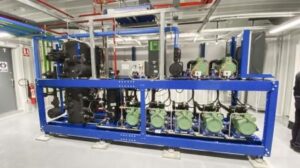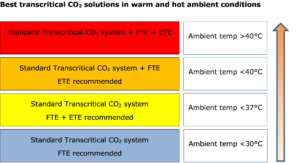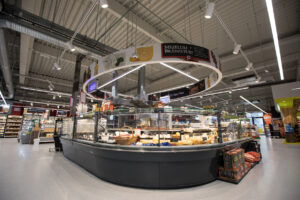Company says its Carbon 4 Retail Refrigeration project confirms benefits of a natural approach; says it will share results at a digital conference, scheduled for July 1
MILAN, Italy, 29 June 2021: Increasingly stringent international regulations are driving a massive transformation in the world of commercial refrigeration – at a European level with the F-gas Regulation and internationally with the Kigali Amendment, commercial refrigeration manufacturer, Epta said through a Press release.
The company said it has already achieved important milestones in the technological development of HFC-free solutions. It added that its Life-C4R (Carbon 4 Retail) Refrigeration project, co-financed by the European Union, confirms the benefits of a natural approach.

Francesco Mastrapasqua, the company’s Institutional Affairs Manager, said: “The three-year Life-C4R – Carbon 4 Retail Refrigeration project was created to sensitise the scientific community, the component suppliers and the retail world’s key players in the use of increasingly efficient solutions. One of the goals is demonstrating how HCFC and HFC refrigerants can be completely replaced with transcritical CO2, anywhere in the world.”
The patented FTE 2.0 Full Transcritical Efficiency and ETE Extreme Temperature Efficiency systems, Epta said, are recognised by the EU as simple and efficient systems and are at the very core of the Life-C4R. “The Life-C4R Plan is essential in validating the FTE and ETE performance in all climatic conditions, in promoting their international diffusion and in certifying both as global and reliable solutions for the future of commercial CO2 refrigeration,” Mastrapasqua said. “The data analysis of the three Italian pilot projects and four replica prototypes in Romania and Spain, installed in collaboration with Epta Iberia and DAAS, will be presented during the Life-C4R Project digital conference, scheduled for July 1.”
The event will be an opportunity to gain in-depth knowledge on the plan’s innovations, lessons learnt and the advantages of the FTE 2.0 and ETE technologies, using the results collected in store by retailers, Epta said, adding that those interested in attending the conference could do so by registering at https://blog.eptarefrigeration.com/en/life-c4r.

FTE 2.0, Epta said, represents the evolution of its patented FTE Full Transcritical Efficiency system. It is recommended at any temperature and is, therefore, a must for obtaining maximum efficiency above 37 degrees C, it said. Simple, efficient, reliable and industrialised, FTE uses flooded evaporators, it said. They allow for the difference between the evaporation temperature and the cabinet’s internal temperature to be significantly reduced and, therefore, for an energy consumption 10% lower than a traditional CO2 system, it claimed.
This is a simple solution, the company said, where it has mechanically added only a multilevel liquid receiver to the standard configuration. On the one hand, FTE reduces the compressors’ discharge temperature, allowing for smooth functioning at high temperatures, it said. On the other hand, it guarantees their perfect lubrication, favouring a longer life cycle of the component itself, it said. FTE also guarantees up to 20% lower installation and maintenance costs, it added. Finally, the FTE 2.0 version, which is integrated into the rack, takes up less space and reduces installation and start-up times, it further added.

The ETE, Epta said, allows for 100% cooling capacity to be reached even in the hottest climates, both in industrial and commercial refrigeration applications. Recommended at temperatures between 30 degrees C and 40 degrees C, it guarantees maximum savings over 40 degrees C, also in combination with FTE, the company claimed. In this case, the transcritical CO2 system is guaranteed to work perfectly at any latitude, even on non-booster systems and in industrial refrigeration, it said. ETE’s “secret” is contained in the refrigerant temperatures’ reduction before its distribution to end users, it said. As it leaves the air exchanger at a value close to the ambient temperature, the gas is further cooled, it said. The system, it added, allows for an almost total disappearance of “flash-gas”, creating significant energy savings over time and smooth functioning even well above 40 degrees C.
Copyright © 2006-2025 - CPI Industry. All rights reserved.